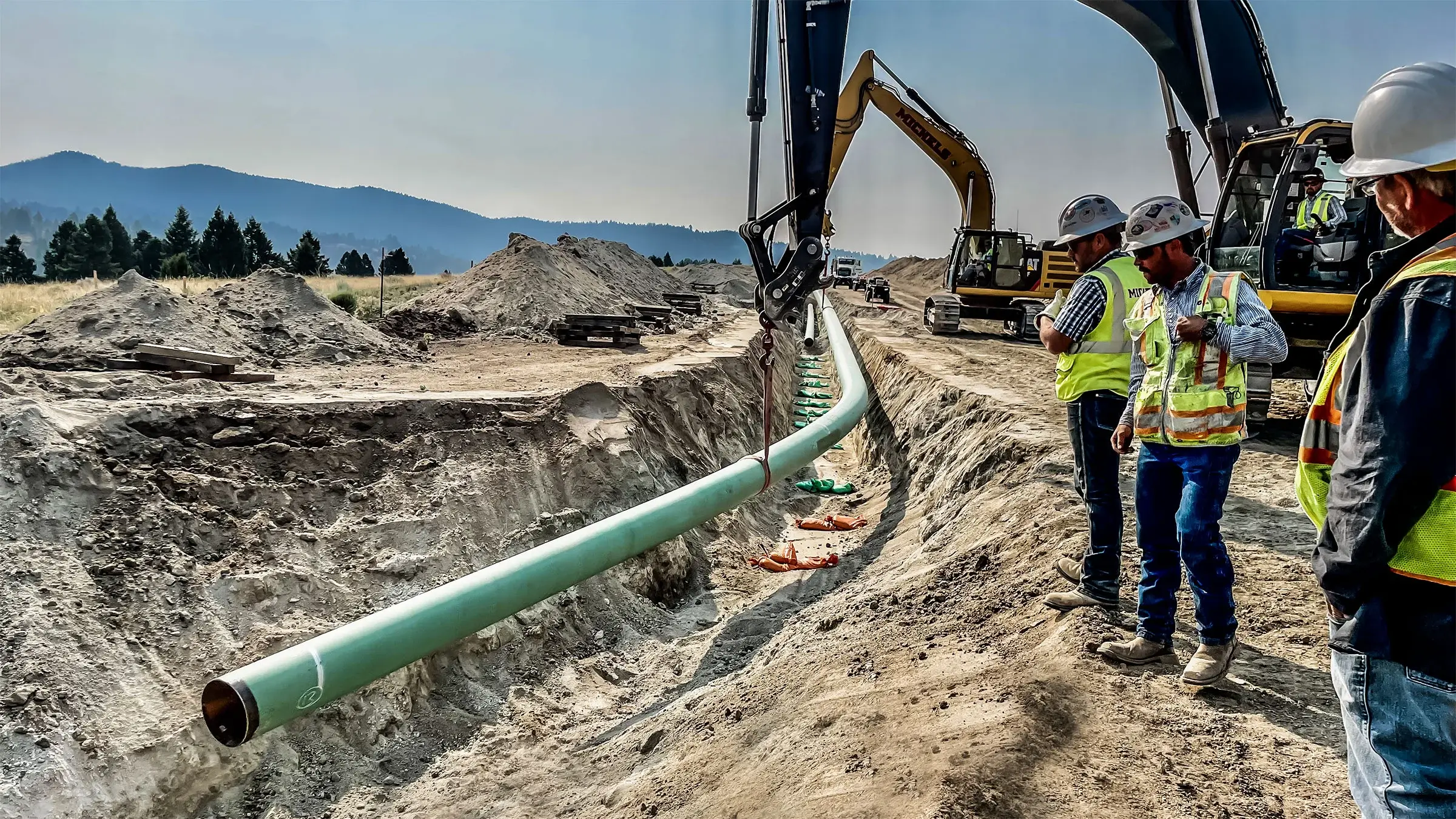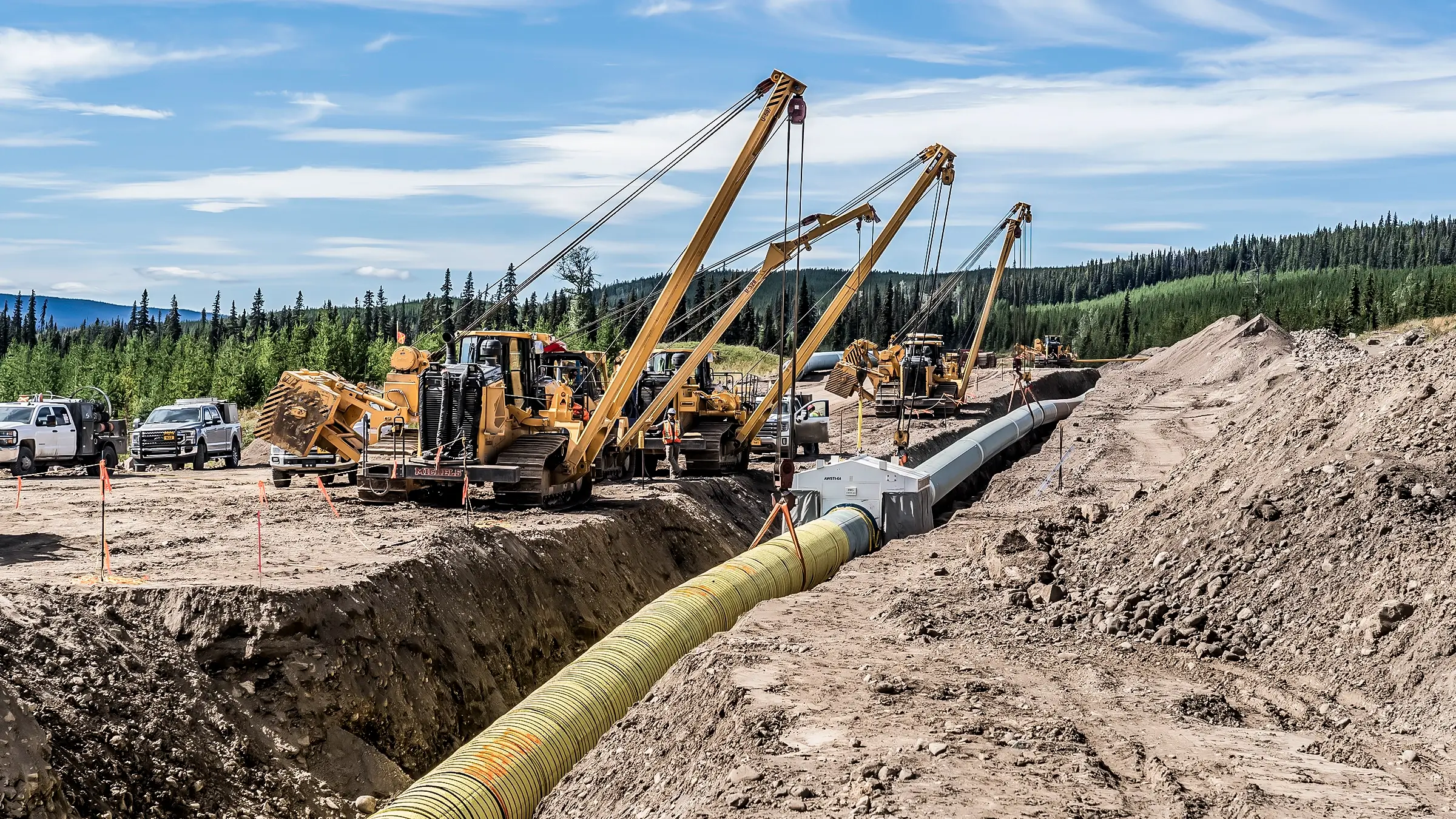The Significance of Pipeline Construction: Checking Out the Services Offered in the Sector
Pipeline construction is a vital component of contemporary infrastructure. It facilitates the transport of vital resources like oil, gas, and water. The industry encompasses different services, consisting of planning, site prep work, and installment. Each stage requires precision and adherence to security standards. As areas rely on these systems for their incomes, understanding the intricacies of pipeline construction reveals its value and potential difficulties. What factors influence the success of these projects?
Introduction of Pipeline Construction Services
Pipeline construction solutions encompass a series of specific activities designed to promote the installation of pipelines for transferring numerous substances, including oil, gas, and water. These solutions typically include website prep work, excavation, installment of pipe segments, and backfilling. Skilled labor and innovative tools are basic for ensuring each stage is executed with precision and safety.Safety protocols are vital, as these tasks usually involve functioning with hazardous products and in difficult settings. Quality assurance procedures identify that the pipes satisfy market standards and laws. In addition, the solutions might include trenchless technology, which reduces surface disruption.Environmental factors to consider play a substantial duty in pipe construction, requiring analyses and mitigations to safeguard bordering ecosystems. In general, pipeline construction services are vital for establishing the framework required for energy and water distribution, sustaining both financial development and societal requirements.
Preparation and Style in Pipeline Projects
Efficient preparation and layout are critical parts of successful pipe jobs, making sure that all elements are carefully attended to before construction begins. This phase includes complete expediency research studies that examine the technical, economic, and environmental variables affecting the job. Engineers and designers team up to develop thorough strategies that lay out the pipe path, materials, and construction approaches, straightening with governing demands and industry standards.Advanced software and modeling methods are usually used to imitate different scenarios, enhancing the design for effectiveness and security. Ecological influence evaluations are conducted to minimize prospective damage to ecological communities and neighborhoods, mirroring a commitment to lasting practices. Additionally, stakeholder engagement is important, cultivating communication and addressing problems from influenced celebrations. Ultimately, efficient planning and style established the foundation for a pipeline task, reducing dangers and making certain a streamlined construction procedure, eventually contributing to the overall success of the procedure.
Site Preparation and Excavation
Thorough website preparation and excavation are necessary actions in the pipe construction process. This stage includes a thorough analysis of the land where the pipeline will be installed. Task teams conduct studies to recognize soil types, topography, and existing utility lines to guarantee a safe and efficient excavation. Proper site preparation minimizes ecological effect and facilitates smoother construction operations.Excavation adheres to, where heavy equipment is employed to eliminate dirt and rock, developing a trench that meets the specified depth and size for the pipe. This procedure must follow security regulations and ecological guidelines to prevent damage to surrounding ecosystems.Additionally, disintegration control steps are executed to maintain the website during and after excavation. Reliable site prep work and excavation contribute considerably to the total success of pipe tasks, laying a strong foundation for the subsequent stages of construction.
Pipeline Installation Techniques
Pipeline installation methods are vital for the effective implementation of facilities projects. Two prominent approaches consist of trenchless modern technology, which reduces surface disturbance, and the open-cut excavation process, understood for its simple strategy. Each method provides distinctive benefits and factors to consider depending upon job requirements and environmental factors.
Trenchless Modern Technology Techniques
While typical methods of pipe installation often involve extensive excavation, trenchless modern technology techniques provide a more reliable and eco friendly choice. These cutting-edge strategies, such as horizontal directional boring and pipe bursting, minimize surface area disturbance by permitting the installment of pipes without substantial excavating. This not only lowers the environmental impact however likewise significantly lowers labor and restoration costs. Trenchless approaches promote the setup of pipes in urban locations where standard excavation would be unwise or damaging to existing facilities. Additionally, these methods can fit various soil types and problems, making them versatile options for pipeline construction. Inevitably, trenchless technology stands for a considerable development in the pipe industry, promoting sustainability and operational performance.

Open-Cut Excavation Process
Open-cut excavation remains an best site essential method in pipe installment, characterized by the direct excavation of a trench to lay pipes. This technique involves removing dirt and other products to produce a trench of sufficient deepness and size, permitting the positioning of pipes at the required grade. Open-cut excavation is commonly liked for its cost-effectiveness and simplicity, especially in areas with secure dirt conditions. However, it can disrupt surface activities and calls for careful planning to manage traffic and environmental impacts. Precaution must be implemented to safeguard workers and nearby framework throughout the excavation procedure. In general, while open-cut excavation may not be ideal for all terrains, it continues to be a commonly utilized approach in pipe construction.
Testing and Top Quality Guarantee
Checking and quality control are crucial parts in pipeline construction, making certain that setups satisfy established safety criteria and efficiency demands. Different assessment methods and methods are employed to analyze material quality and adherence to regulatory compliance. This methodical method assists identify prospective problems before they rise, safeguarding the integrity of the pipeline system.

Inspection Techniques and Approaches
Evaluation techniques and approaches are important parts in guaranteeing the stability and safety of pipe construction. Numerous techniques, including aesthetic inspections, ultrasonic testing, and radiographic assessments, are employed to spot problems and confirm top quality. Aesthetic inspections enable the identification of surface area abnormalities, while ultrasonic testing uses audio waves to evaluate wall density and situate defects inside. Radiographic assessments involve X-rays or gamma rays to create photos of the pipeline's framework, revealing covert concerns. Additionally, pressure screening is performed to examine the pipe's honesty under functional problems. These techniques jointly contribute to a detailed understanding of the pipe's problem, allowing timely maintenance decisions and ensuring compliance with market criteria. Effective evaluation is essential for preventing failings and advertising long-term operational safety and security.
Safety And Security Standards Compliance
Ensuring compliance with security requirements is vital in pipe construction, as it straight influences the task's overall high quality and dependability. Sticking to well established guidelines and guidelines warranties that construction techniques reduce threats connected with pipe installation and operation. Creek Pipe Texas oilfield. Extensive testing procedures, consisting of non-destructive testing and stress evaluations, are essential in verifying that pipes can endure the functional stresses they will certainly run into. Quality assurance steps are likewise essential, as they develop a structure for regular tracking and examination throughout the construction process. By focusing on safety and security standards conformity, companies not only protect workers and the setting however also enhance the honesty of the pipeline, inevitably causing long-term functional success and public rely on the facilities
Product Top Quality Analysis
Material top quality examination plays a significant duty in the total honesty of pipeline construction. This process includes strenuous testing and top quality assurance actions to assure that materials fulfill market standards and specs. Numerous tests, including tensile stamina, rust resistance, and weld integrity evaluations, are performed to identify any potential weak points. A complete analysis not just assures the efficiency of the pipe but also improves safety and resilience over its lifespan. Additionally, carrying out top quality control procedures assists alleviate threats related to material failures, which can cause pricey repair work and ecological dangers. By prioritizing material quality examination, firms can ensure compliance with regulatory requirements while promoting confidence among stakeholders in the helpful resources dependability of their pipe systems.
Maintenance and Fixing Providers
Repair and maintenance solutions play an important function in the long life and effectiveness of pipe systems. These solutions encompass routine inspections, fixing, and restorative activities to address damage, leakages, and other problems that might occur in time. Competent professionals make use of innovative technologies such as ultrasonic screening and wise pigging to keep an eye on pipe honesty, making certain that any potential problems are identified early.Additionally, upkeep programs commonly include scheduled safety nets made to improve system integrity and decrease the possibility of unanticipated failings. Repair services may entail the substitute inch pex underground water line of broken areas, sealing leakages, or employing trenchless technology for marginal interruption.
Environmental Compliance and Security Steps
Pipeline systems not just need ongoing upkeep and repair work to operate effectively but likewise must abide by stringent ecological conformity and precaution. These guidelines are essential for reducing environmental influence and ensuring public safety and security. Companies in the pipeline construction sector implement extensive ecological assessments prior to project initiation, determining prospective risks to wildlife and ecosystems.Furthermore, adherence to security methods shields workers and surrounding areas. This consists of normal training on emergency reaction and spill prevention techniques.To preserve compliance, industries utilize checking technologies to discover leaks and other anomalies in real-time. Environmental administration strategies are often developed to describe actions for addressing unanticipated problems during construction.Ultimately, strict adherence to ecological compliance and security measures not just satisfies legal responsibilities yet likewise fosters lasting methods within the market, advertising a balance between facilities advancement and ecological stewardship.
Frequently Asked Questions
What Career Opportunities Are Readily Available in Pipeline Construction?
Profession chances in pipe construction incorporate duties such as task supervisors, engineers, welders, and safety inspectors. These positions call for diverse skills, offering pathways for development in an important sector of infrastructure growth and power distribution.

Just How Do Pipeline Projects Effect Citizen Communities?
Pipeline projects significantly influence regional areas by affecting economic development, offering work opportunities, and improving infrastructure. They may additionally raise worries about environmental results, land use, and prospective disturbances to community cohesion and all-natural communities.
What Innovation Is Used in Modern Pipeline Construction?
Modern pipe construction makes use of sophisticated modern technologies such as GIS for mapping, drones for aerial surveys, and automated welding systems to boost performance, security, and accuracy, inevitably helping with the effective transportation of sources throughout various surfaces. Creek Pipe Midland.
Just How Are Pipeline Construction Costs Approximated?
Pipeline construction costs are estimated with detailed analyses of materials, labor, tools, and regulatory needs. Variables like terrain, job dimension, and environmental considerations additionally substantially affect the general spending plan and monetary preparation for construction.
What Are the Biggest Difficulties in Pipeline Construction Projects?
The biggest difficulties in pipeline construction projects consist of regulatory conformity, environmental issues, logistical issues, securing funding, and managing labor shortages. Each factor can considerably affect timelines and budget plans, making complex the total implementation of the project.
Comments on “Choosing the Right Pipe Materials With Help From Creek Pipe Company”